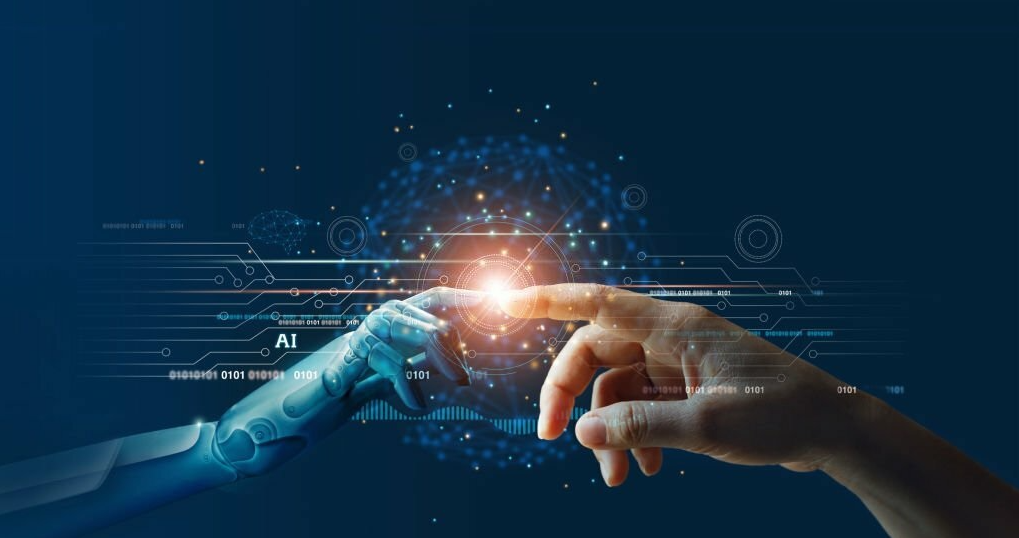
Artificial Intelligence (AI) and Machine Learning (ML) Overview
SUNSAK TECH empowers businesses with AI and ML services, unlocking efficiency and intelligence for smart decision-making and operational optimization.
Unleashing the Power of Tomorrow: A Deep Dive into Artificial Intelligence (AI) and Machine Learning (ML)
In the era of unprecedented technological advancement, Artificial Intelligence (AI) and Machine Learning (ML) stand as the vanguards of innovation, reshaping industries and redefining the possibilities of what machines can achieve. This article delves into the transformative realms of AI and ML, exploring their applications, impact, and the promises they hold for the future.
1. The Rise of Intelligent Machines:
Artificial Intelligence, often referred to as the simulation of human intelligence in machines, is a broad concept encompassing various subfields. Machine Learning, a subset of AI, empowers machines to learn patterns from data, enhancing their ability to make decisions and predictions without explicit programming.
2. Practical Applications Across Industries:
AI and ML have transcended the realm of theoretical concepts and found practical applications across diverse industries. From healthcare and finance to manufacturing and entertainment, the ability of machines to analyze vast datasets and derive meaningful insights has revolutionized processes, improved efficiency, and opened new frontiers of innovation.
3. Automation and Efficiency:
One of the key contributions of AI and ML is in automating repetitive tasks and processes. This not only reduces human intervention in mundane activities but also enhances efficiency by allowing machines to handle complex computations and analysis at a scale that surpasses human capabilities.
4. Personalization in User Experience:
In the age of information overload, personalization is a driving force in user-centric experiences. AI and ML algorithms analyze user behavior and preferences to deliver tailor-made content, recommendations, and services. This not only enhances user satisfaction but also contributes to the success of businesses in highly competitive markets.
5. Healthcare Revolution:
The healthcare industry is undergoing a profound transformation with the integration of AI and ML. From diagnostic tools that analyze medical images to predictive models for disease prevention and personalized treatment plans, these technologies are saving lives, improving patient outcomes, and revolutionizing the way healthcare is delivered.
6. Ethical Considerations:
As AI and ML become more pervasive, ethical considerations come to the forefront. Issues such as bias in algorithms, data privacy, and the impact on employment require careful examination. Striking a balance between technological advancement and ethical considerations is crucial to ensure that these powerful tools are used responsibly.
7. The Future Landscape:
The journey of AI and ML is an ever-evolving one. The future holds promises of even more sophisticated applications, from fully autonomous vehicles to advancements in natural language processing and the convergence of AI with other emerging technologies. The continuous exploration and integration of these technologies are poised to redefine the way we live, work, and interact.
Conclusion:
Artificial Intelligence and Machine Learning are not merely buzzwords; they are catalysts for a technological revolution that is shaping the future. As these technologies continue to evolve, the collaboration between human ingenuity and machine intelligence opens up new possibilities and challenges. Navigating this dynamic landscape requires a balance between innovation, ethical considerations, and a shared vision of a future where intelligent machines augment human capabilities, driving progress and innovation to unprecedented heights.
Venturing Beyond the Ordinary
Predictive Analytics: Harness machine learning algorithms to predict trends and user behavior.
Natural Language Processing: Implement AI to understand and respond to natural language input for improved user interactions.
Continuous Learning Models: Develop ML models that adapt and improve over time with new data.
Service Category
- Custom Software Development
- Web Application Development
- Mobile App Development (iOS, Android)
- UI UX Design
- Database Design and Management
- Cybersecurity Services
- IT Consulting
- Artificial Intelligence (AI) and Machine Learning (ML)
- Content Management Systems (CMS)
- Data Analytics and Business Intelligence
- ERP (Enterprise Resource Planning) Solutions
- Software Integration
- Payment Gateway Integration
- Custom API Development
- Chatbot Development
- Custom Reporting Solutions
- Document Management Systems
- Continuous Integration/Continuous Deployment (CI/CD) Implementation
- E-commerce Solutions
- IT Infrastructure Management
- Business Intelligence (BI) Solutions
- HR Management Software
- Robotic Process Automation (RPA)
- Barcode & QR Code Solutions
- Website Development
- RFID Solutions
- CRM (Customer Relationship Management) Software
- Managed Cloud Infrastructure
- Managed Cloud Security
- Managed DaaS Services
